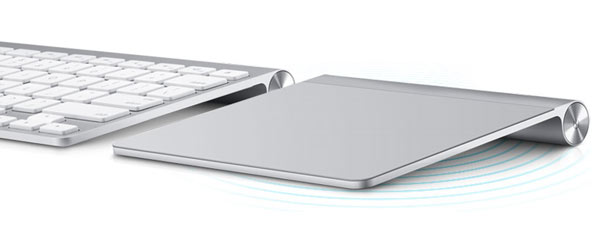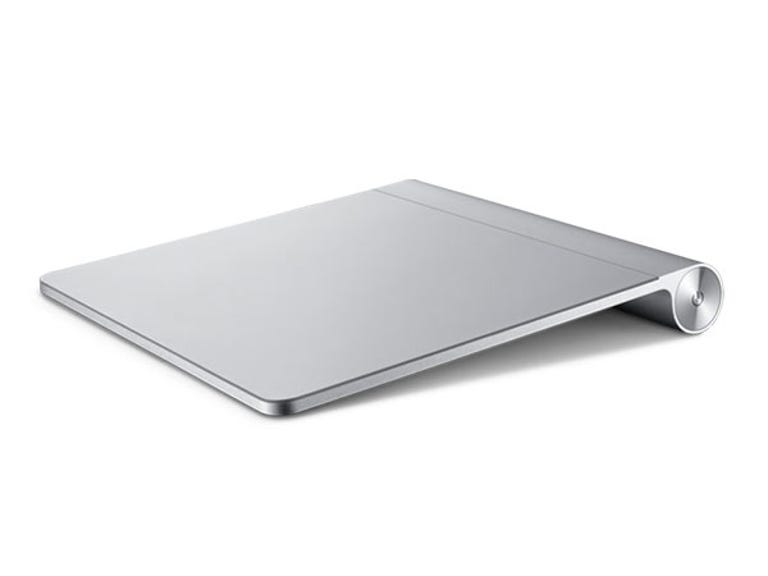 Why You Can Trust CNET
Why You Can Trust CNET Apple Magic Trackpad review: Apple Magic Trackpad
While we still prefer using the speedier and more accurate mouse, some will no doubt be interested in the Magic Trackpad. It's not magic — it does no more or less than you'd expect it to. But then, that's not necessarily a bad thing.
From the beginning, it's likely you've already decided whether you love, hate or are ambivalent towards the new Magic Trackpad. Following the iPad trend of making things bigger, the Magic Trackpad is simply a touch pad taken from a MacBook, made large and given a USB cable. It's also been given a rather high asking price for a rodent replacement, riding at the AU$99 mark.
The Good
The Bad
The Bottom Line
We're perhaps under-representing the device — a decent amount of thought has clearly gone into the design; whether it's the fact that it has the same angle and feel as Apple's keyboard, or that you can still physically click the thing (the "button" itself is built into the foot pads at the bottom). The aluminium and glass pad is a nice bit of engineering to behold and alluring to the touch.

Like a keyboard, without keys. (Credit: Apple)
The major caveat is there before you open the package — it's not going to be as precise as a mouse. For some though it won't need to be, and for others still the full complement of OS X gestures it supports will be enough to tempt people over.
Apple's System Preferences panel for the Trackpad continues its excellent combination of settings and video tutorials. (Screenshot by CBS Interactive)
The sheer size of the pad means that even on a 27-inch iMac, traversing the screen is entirely possible in a single swipe. It does allow for a little greater precision than your standard MacBook Pro pad, but users of any decent mouse will probably shirk. If your wrist already feels uncomfortable with the angle of Apple's keyboard, the Magic Trackpad will just increase your ergonomic woes.
The power button can't actually turn the thing off. It wakes the device and also broadcasts the trackpad as a synchronisable Bluetooth device. (Credit: Apple)
The standard multi-touch functions are all here: double tap for right-click, double-finger scrolling, triple-finger swipe to navigate, quadruple-finger Exposé functions, pinch to zoom and rotate are all there, as well as the newer inertial scrolling option.
Brand new this time around is the ability to move windows by holding down three fingers and swiping, although if you enable this you lose the swipe-to-navigate function in Safari and iPhoto. Given that you have to do the gesture while the cursor is placed on the app's title bar rather than anywhere in the window, we'd rather enable drag, drag lock and keep the ability to swipe navigate.
While we're advocates of using tap-to-click, the hardware "button" works just fine, if requiring a little too much effort. Just make sure you've got the Magic Trackpad on a solid surface — it won't work terribly well on soft surfaces like carpet or a lounge. While most would use it on a desk, we could see the potential for the Trackpad to perhaps be used in media centre applications.
AA batteries go in here. Never one to miss an upsell, Apple now sells a battery charger too. (Credit: Apple)
On the Windows side, the Trackpad acts just as the MacBook touch pad does, allowing drag/lock, single and right button taps and two-finger scrolling — anything more complicated you don't have access to. You'll have a tough time though if you buy this specifically for a Windows machine: you'll not only need a Bluetooth receiver, but access to a copy of Snow Leopard as well to install the Boot Camp drivers, as Apple doesn't make these available on its site. You'll then have to install the update from Apple's site for the Magic Trackpad.
Actually using it induces a moment of cognitive dissonance — you are, after all, using a touch pad on a desktop. Soon it becomes second nature though, and while the imprecision remains compared to a mouse, for purely casual users this might just be enough, or dare we say, even better for their needs.
Does it hint at the future direction of Apple's desktops and software? Or is it just another attempt to put multi-touch everywhere? While we still prefer using the speedier and more accurate mouse, some will no doubt be interested in the Magic Trackpad. It's not magic — it does no more or less than you'd expect it to. But then, that's not necessarily a bad thing.


